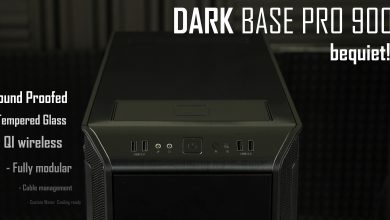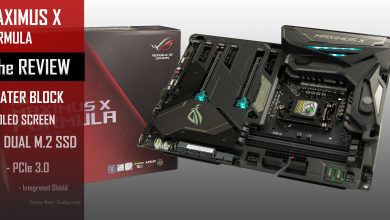Key Features
- Price: 215 USD (CLICK TO BUY )
- ATX Form Factor / 6 PCB Layers
- INTEL Z490 chipset
- LGA 1200 CPU socket
- CPU Support
- 10th G Intel Core CPU
- 11th Gen Intel Core CPU
- 4 x 32GB 4,600 MHz DDR4, maximum 128 GB
- 3 x PCIe x16 — 3 x PCIe X1
- Back IO :
- Display Port 1.4
- HDMI 2.0
- 2 x USB 2.0 — RX/TX 480 Mbps
- 4 x USB 3.2 2nd gen. Type-A+C — RX/TX 10 Gbps
- 2 x USB 3.2 (1st Gen) — RX/TX 5 Gbps
- 2.5Gbs LAN,
- Realtek ALC1220 Codec 7.1 channels audio,
- STORAGE
- 2 x M.2 SSD — RX/TX 32 Gbps
- 6 x SATA 3 — RX/TX 6 Gbps
- MULTIPLE GPU
- x2 Nvidia SLI
- x3 AMD Crossfire
- Upgraded and robust VRM
- Great passive Cooling elements
- 6 layered PCB ( PCIe 4.0 ready)
- 4,600 MHz RAM clock
- Price
- Premium Audio
- No hybrid fan connectors
- No Q-LED screen
- No 2nd M.2 SSD Heat-shield
The PRIME is ASUS got-to motherboard for most of the market.
Be a first-time builder, a seasoned gamer or even a transitioning enthusiast, the Prime series is where your money will most likely fall.
And rarely do you see a single product meaning so much for both of the largest players of the tech world, ASUS and Intel.

But this generation is different! As Intel plays catch-up with AMD, both on the PCIe 4 and CPU core-count fronts, ASUS had to rethink its entire line-up design, allowing a more sturdy and powerful product all together.
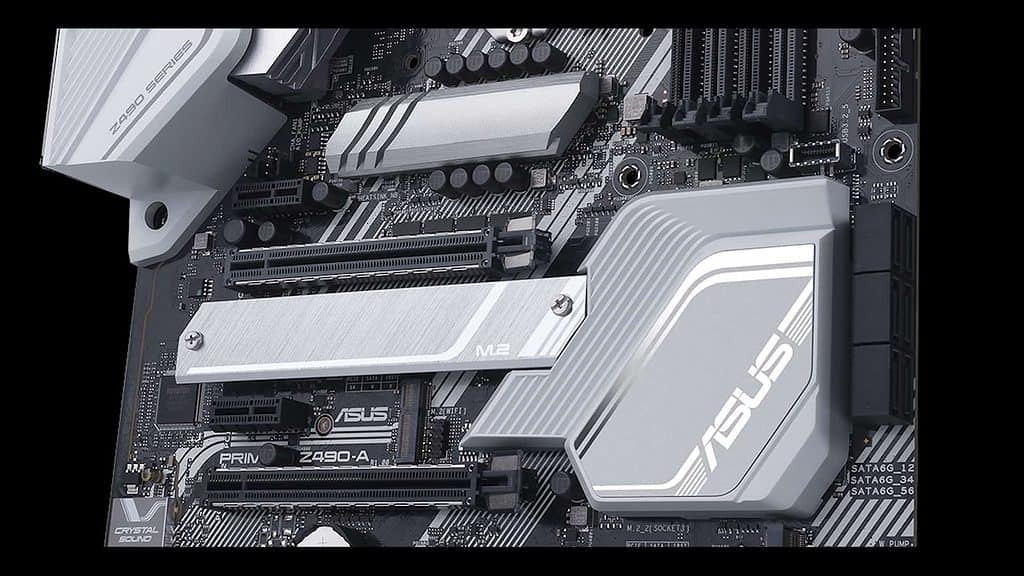
- 4 SATA cables
- Thermistors
- M.2 SSD screws and screw raisers
- RGB addressable cable extension
- RGB cable extension
- Manual
- DVD driver & Software
PCB
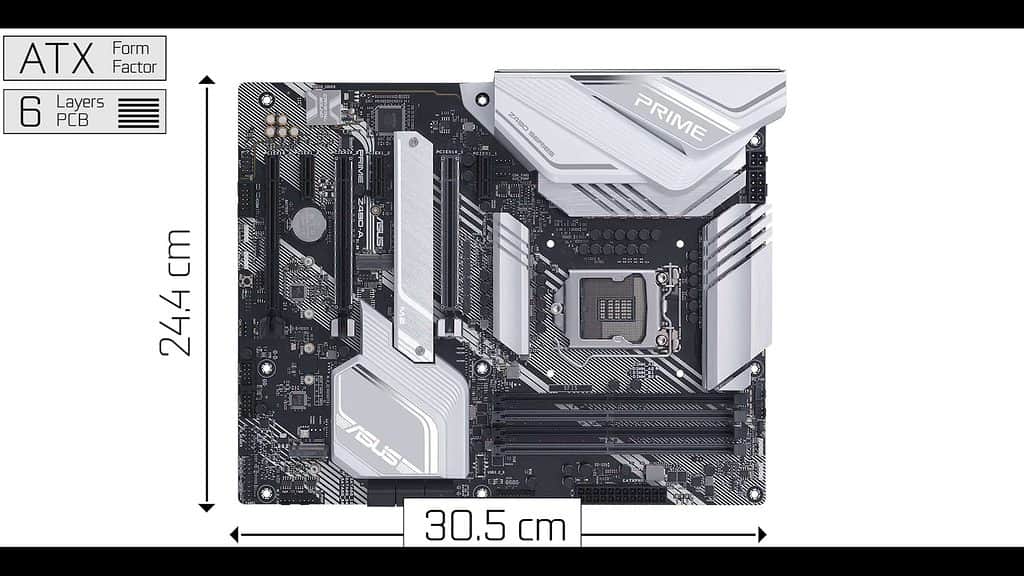
We are dealing with a 6 layered PCB ATX motherboard. A significant upgrade when compared to its predecessor, the PRIME Z390-A’s 4 layers, and an added signal isolation which will allow a stable PCIe 4.0 support, whenever the 11th Gen Intel Core CPU will be released.
It also will benefit VRM heat dissipation and audio quality. Obviously, a very solid foundation for a performant and durable motherboard.
LGA 1200
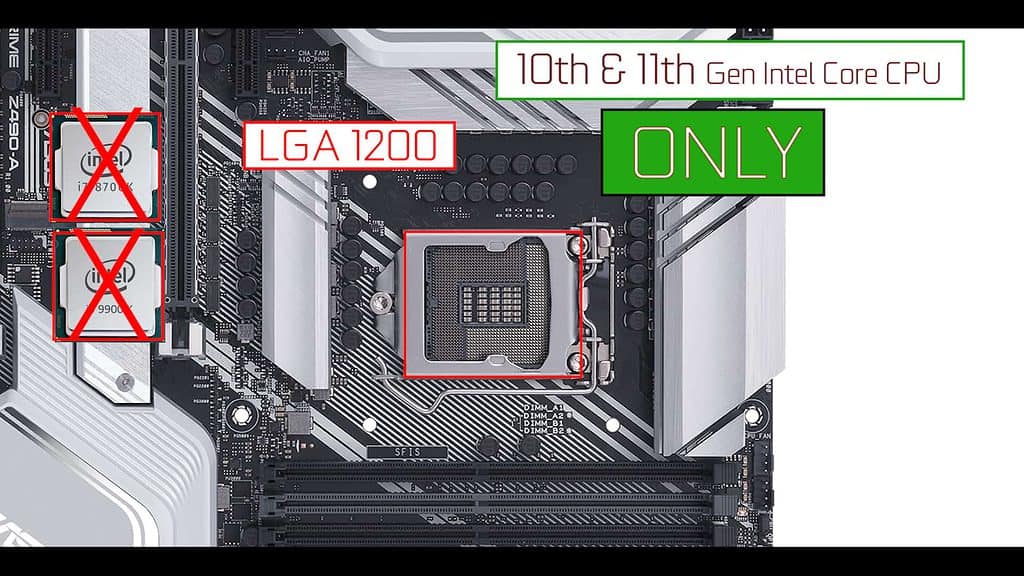
Our LGA1200 socket can support :
- 10th Gen. Intel CORE CPUs (PCIe 3.0)
- 11th Gen. Intel CORE CPUs (PCIe 4.0)
Since this is a new CPU socket, it is not backward compatible, which is disappointing knowing that 9th and 10th gen Intel Core CPU are based on the same Skylake Micro Architecture and can only hand PCIe 3.0 bandwidth standard.
VRM
This is where ASUS really did well!
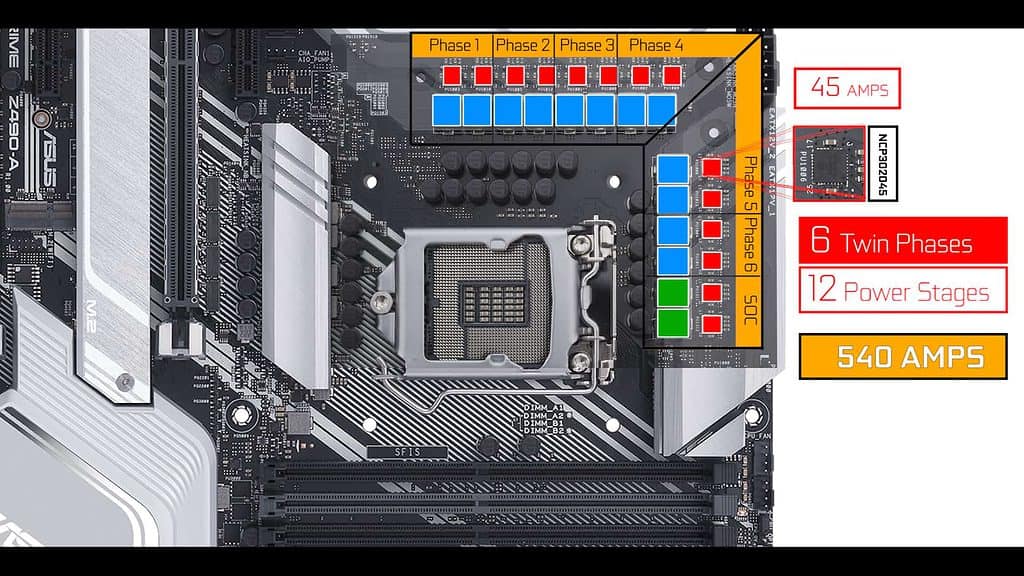
It has nothing to do with its predecessors, and closely follow the PRIME X570-A, the AMD version of this board.
We are dealing with 14 45 amps Powers stages, 12 of which are CPU centric.
They are paired into 6 phases, delivering a whooping 540 AMPs to our poor intel CPU which has only up to 10 cores to handle this.
Obviously this is much more that the current 10th gen Intel CPU needs, and points at a greater number of cores on next years Processors.
Heat wise
First, we have a 6 layered PCB, meaning a greater heat dissipation through the board,
Second, our 630 AMPs (CPU+SOC) are spread amongst 14 power stages meaning more radiating surface
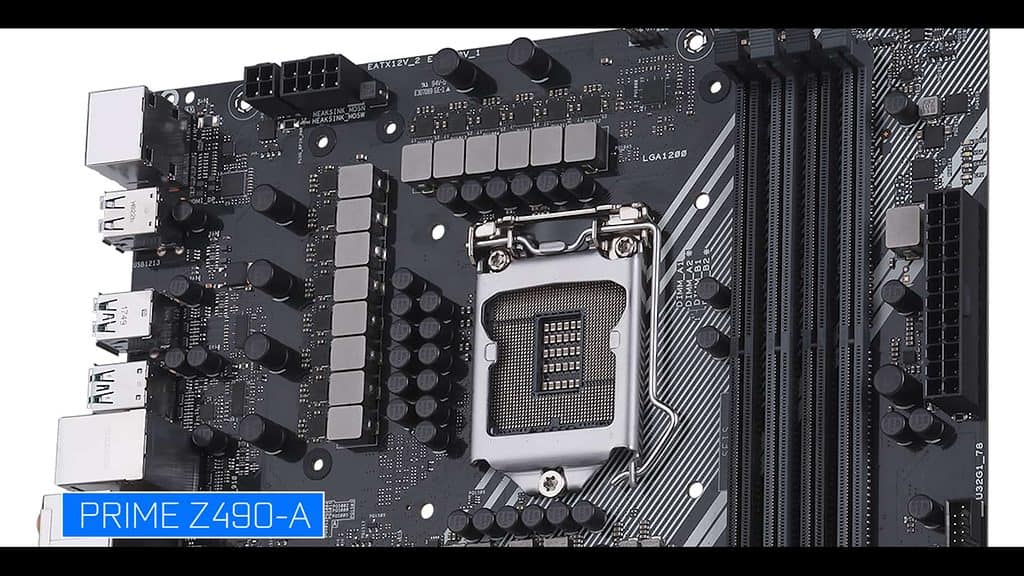
Third finally we have improved, larger and heavier heat sinks, which do a great job at keeping our VRM cool at all time.
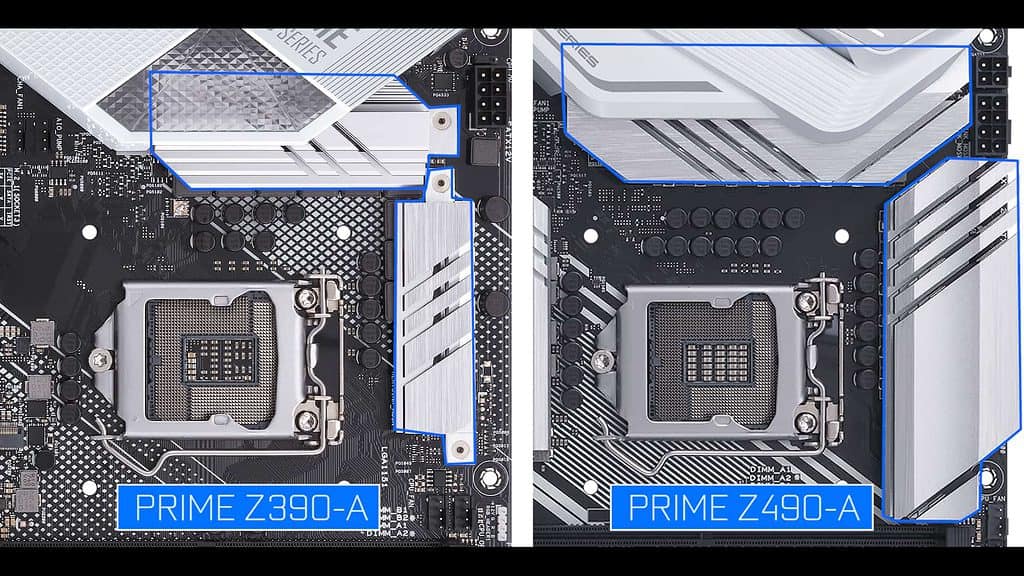
And that all translate in a cool VRM, even in the most demanding and continuous load.
With an overclocked i7-10700k (4,8 GHz / BIOS Auto) , CPU stressed for 45 minutes:
- PCB Junction points : 86 celcius (max)
- VRM : 81 celcius (max)
RAM
The PRIME Z490-A can support up to 128 GB of DDR4 ram in a dual channel configuration.
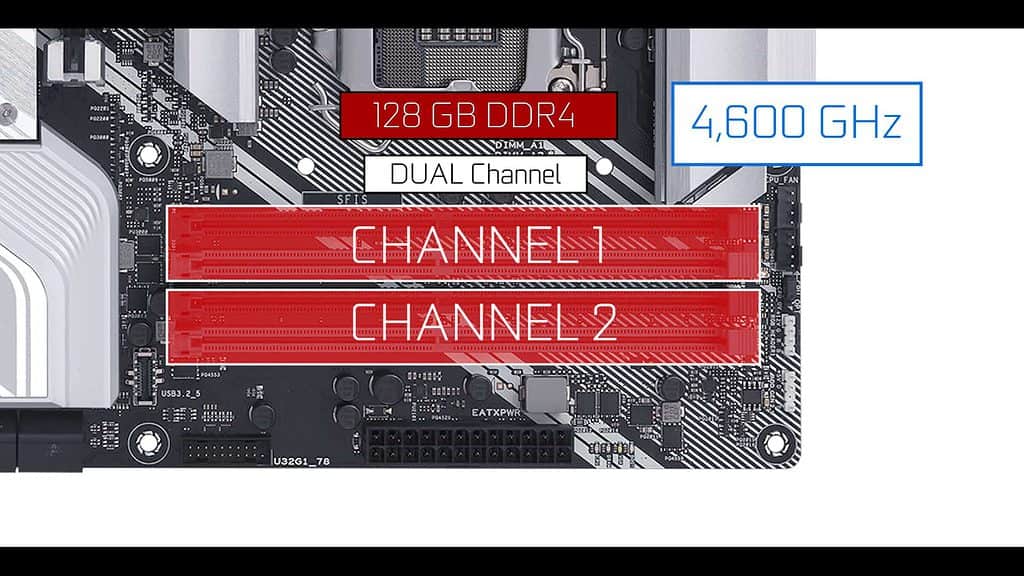
It is overclockable up to a whooping 4.6 GHz, which is noticeably more than its Z390 equivalent (4,266 MHz).
M.2 SSD
Our board can support up-to 2 M.2 SSD ( both upto 11 cm long).
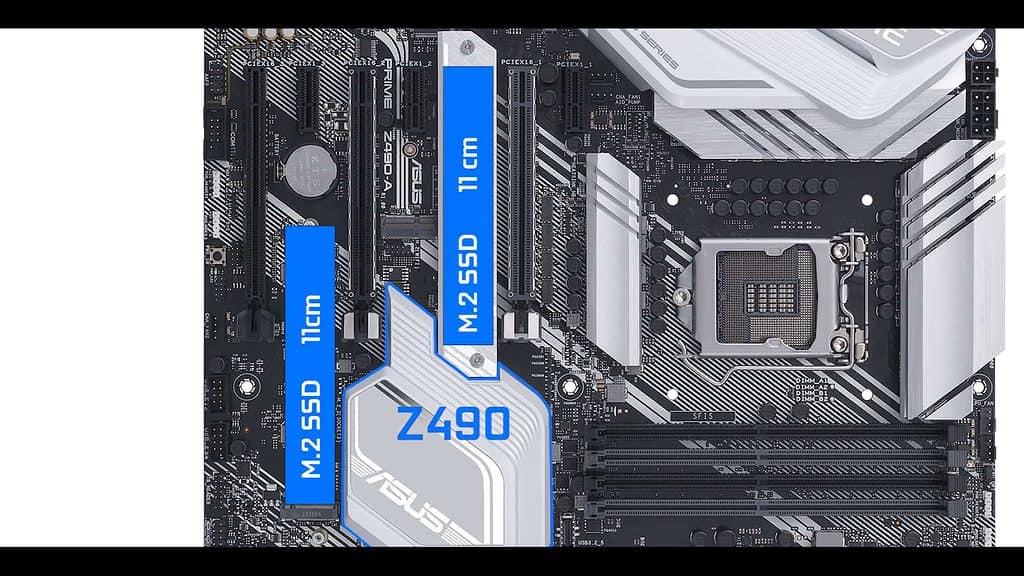
Since our Z490 chipset is Optane ready, they can swap data up to 32 Gb/s.
11th Gen Intel Core CPUs will bring PCie 4.0 bandwidths levels, which should double our CPU feed M.2 SSD data swaps (64 Gb/s).
In both cases our M.2 SSD sticks will experience a lot of heat.
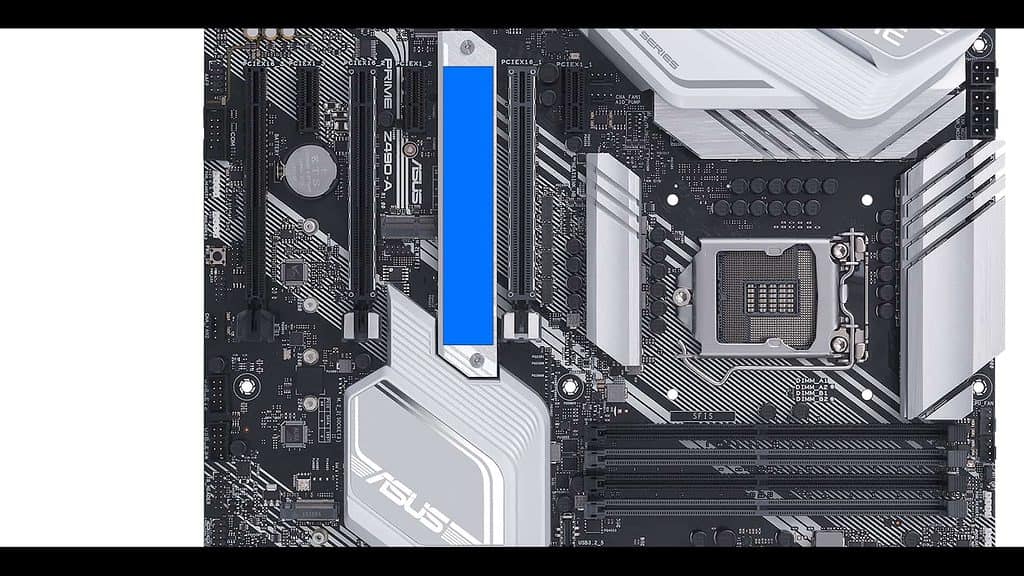
Luckily, we do have a rather impressive thermo-padded heat-shield which do a wonderful job at keeping our stick cool in any usage condition.
Chipset
Our Z490 is in all and for all a Z390 chipset with an upgraded WiFi integrated module (WiFi 6 802.11AX).
It does remain a PCIe 3.0 Chipset meaning that PCIe 4.0 abilities of this board will solely depend on the 20 PCIe lanes of our 11th Gen Intel Core CPU.
It also means that the M.2 SSD which depends on it (on its left) will be capped at PCIe 3.0 level performances (32 Gbs).

So, it is without surprise that we see it survive on a cool 6 Watts power consumption, allowing the absence of active cooling solutions (unlike PCIe 4.0 X570 powered motherboards).
SATA 3.0
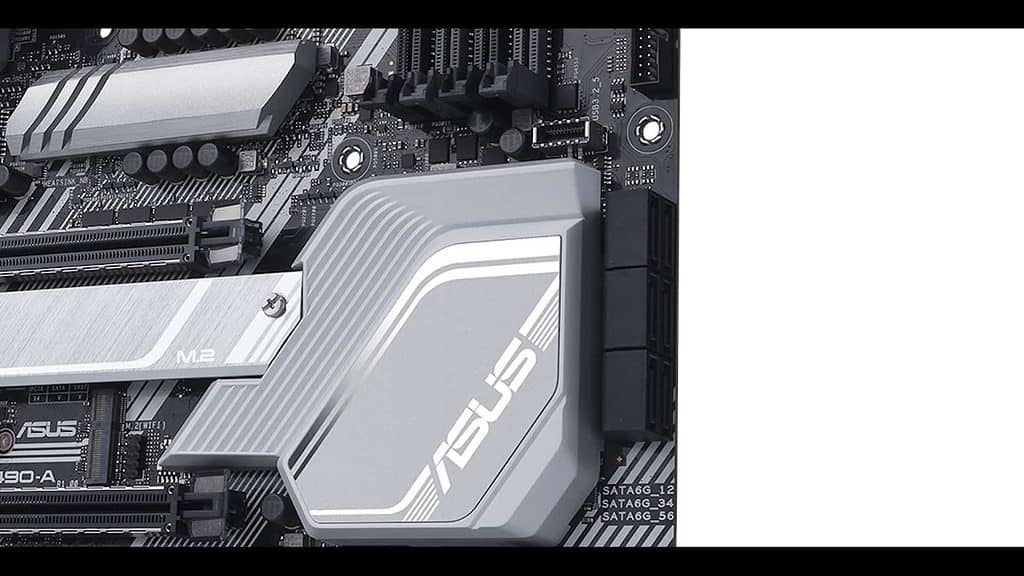
For more classical storage solutions, we have our usual SATA 3.0 plugs. 6 in total, with a transfer rate of 6 Gbs each. They can be configured to run into a 0,1, or 10 RAID configuration.
PCIe Slots

The PRIME Z490-A has 6 3rd/4th Generation PCI expresses slots.:
- 3 16 lanes with different BUS speeds
- 3 single lanes , single speeds
Only the closest one to your CPU can deliver up to 16 full bus speed meaning, this is where you’d want your video card to be placed for optimal performances.
In a dual GPU configuration, our slots will be sharing bandwidth in a 8 by 8 configuration.
And finally the last one one will further share bandwidth giving us an 8 by 8 by 4 configuration.
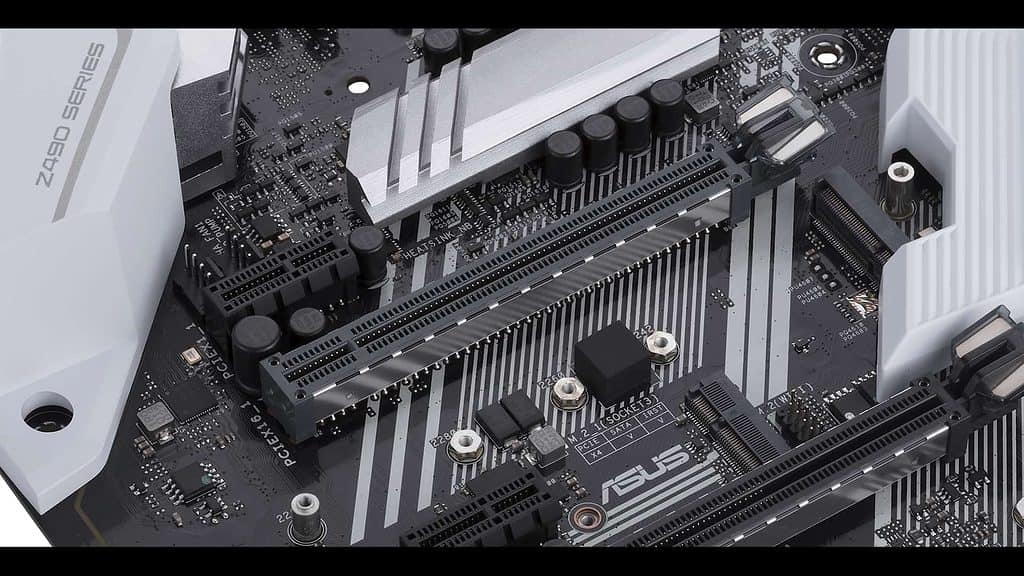
So a good board for a single or even a dual GPU configuration, hence the metal reinforcement on the 2 first 16 slots PCIes.
Note that the board support both SLI (x2) and Crossfire (x3) multi-GPU standards.
Back IO

First let me note the presence of an IO integrated plate which is always a good point!
- 2x display outputs for our integrated graphics (HDMI 2.0 / DP 1.4)
- 2x 2nd Gen USB plugs
- a BIOS flash back button, delighted to find one.. great to update or recover your bios on the go!
- 2x 3.2 5gb USB plugs
- 4x 3.2 2nd GEN USB plus , including a type C
- a 2.5 gigabit LAN which is a noticeable upgrade compared to the usual Gigabit LAN we got on its Z390 version.
- a rather premium S1220 REALTEK audio codec, which fully benefits from the 6 PCB layers board, since both left and right audio channel have been traced on separate and dedicated PCB layers, insuring a better static isolation, especially when recording. Problem that people living in a non grounded house will certainly appreciate !
No WiFi adapter but we do have a WiFi 6 onboard M.2 WiFi connector for future upgrade.
Overall the back IO is fine, but I find it a little empty. The Z490 chipset has plenty more USB 3.2 nested in it and I would have loved to see a couple more 5 Gbs plugs and possibly a Flash back / CMOS button as well.
There is enough room in the price tag for these!
Front Panel Connectors
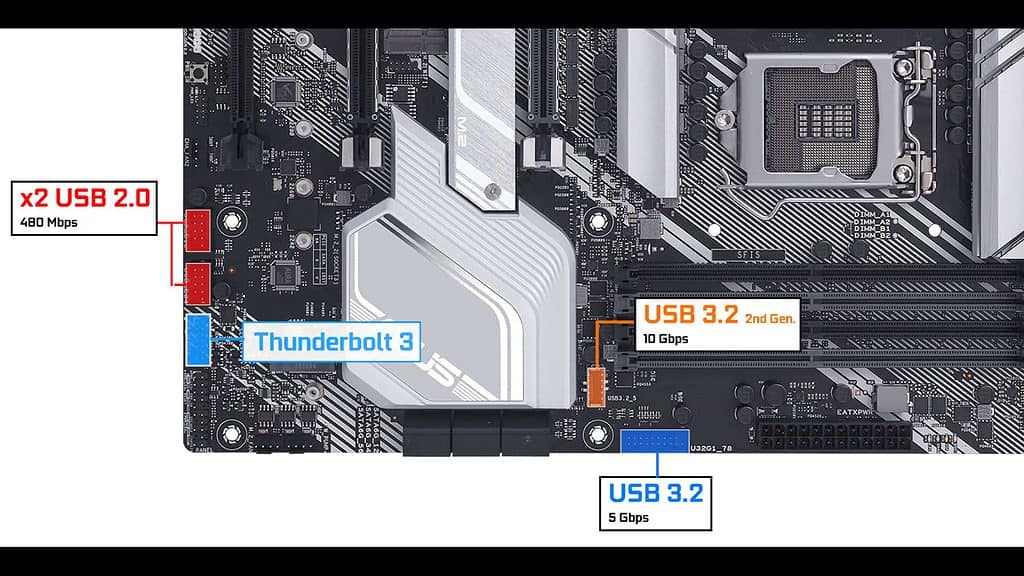
We have :
- 2x 2nd gen USB front panel connectors , good for our AIO pumps, or PSU monitoring,
- 1x 5Gbs USB 3.2 (1st Gen) front panel Connector
- 1x 10Gbs USB 3.2 (2nd Gen) TYPE-C front panel Connector, first time for a A series!
- Thunderbolt 3.0 — 40 Gbs
Overall a well furnished board-based peripherals.
Cooling connectors
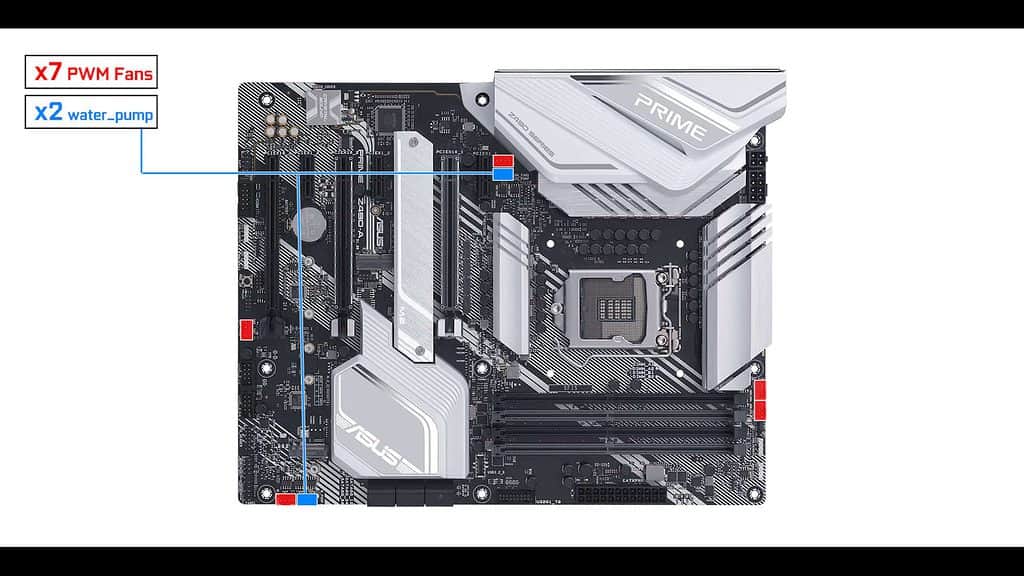
We have 7 nested PWM FAN connectors, 2 of which can support an water coolers (AIO or dedicated)
Definitely what you want to see on an enthusiast driven board. The Prime Z490-A can handle about any cooling solutions you will throw at it. Spanning from the classic air to the eccentric dual-loop custom water cooling apparatus.
Only regret here, is the fact that these connectors are not Hybrids which could support anything you’d throw at it, whether a fan, a water pump or a flow sensor.
I would have given this boards an unprecedented level of agility which enthusiast would have most certainly appreciate.
TROUBLESHOOTING
EZ Debugger

The EZ debugger is really the a crucial must have on the overclockers. More often than not, enthusiasts can’t resist the call to find their RAM or CPU overclocking limits, and fail boots becomes a daily incidence.
THe EZ debugger will give us a first-aide troubleshooting guidance one what stage of the boot your system failed.
AURA Sync Effect
RGB wise, our PRIME Z490-A has 2 nested RGB Strips
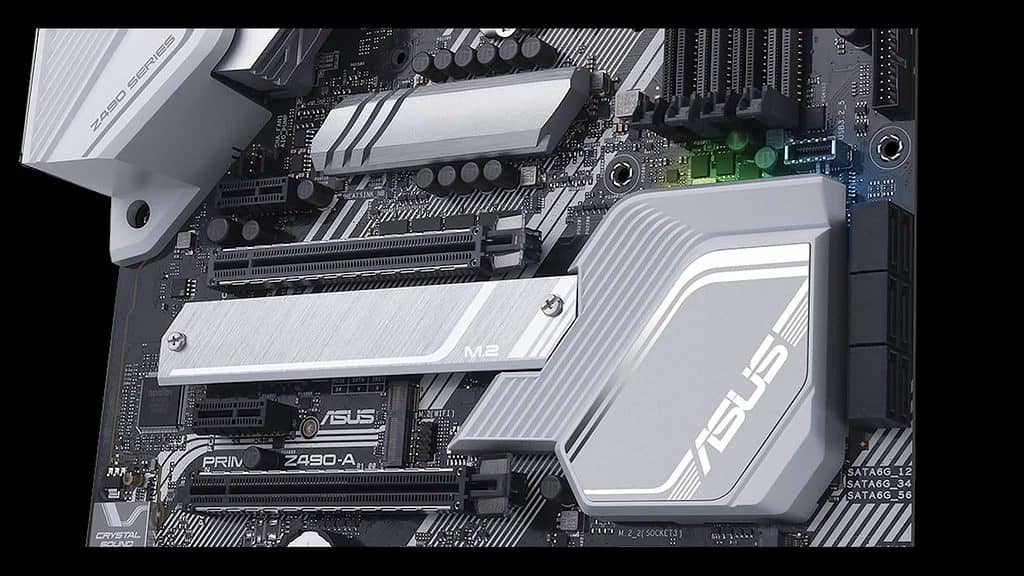
One under our Chipset heat sink,
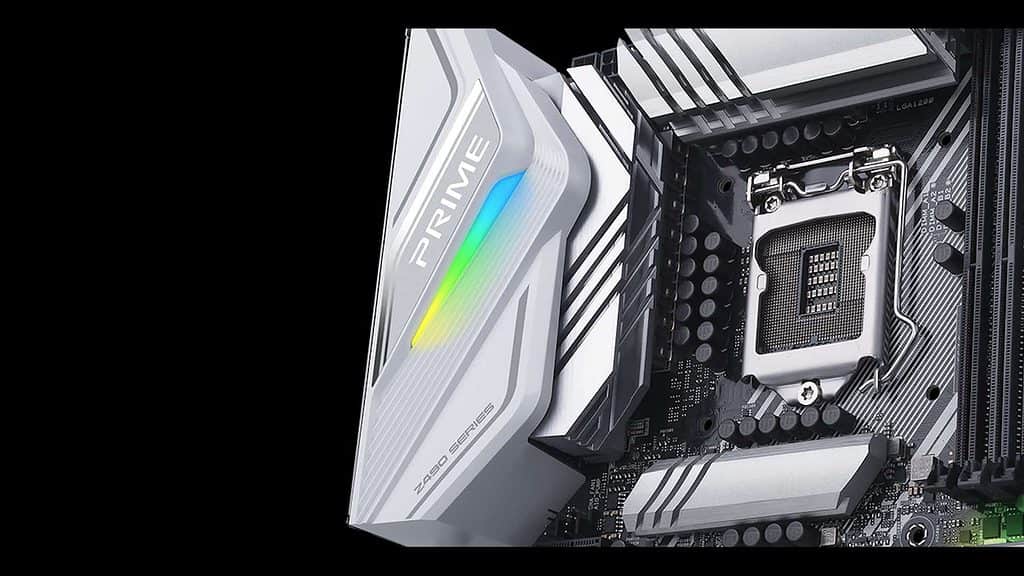
and one under the IO roof.
We also have 4 RGB connectors :
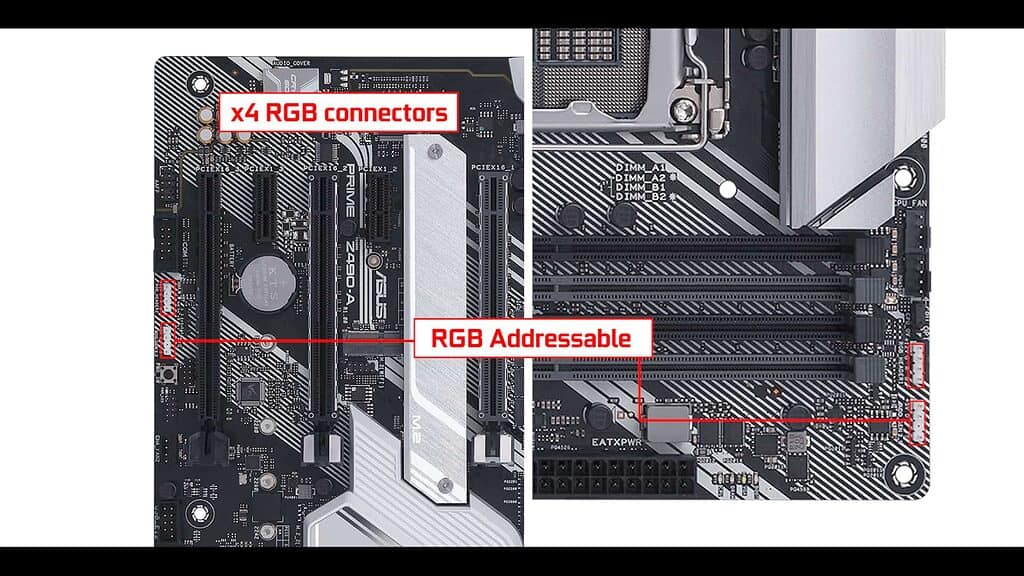
2 standard 12V RGB connector and 2 addressable RGB connector.
All of which can obviously be synced though ASUS proprietary AURA Sync effect software.
CONCLUSION
The PRIME Z490-A will cost you about 220-250 US Dollars. A 30 to 70 bucks premium over its predecessor, the PRIME Z490-A, and the all question is : is it worth it?
I cannot emphasize enough how different these two boards are. The entire Z490 lineup is very different from their Z390 predecessors. Intel is playing catch up with AMD both in terms of standards and CPU core count and that translated in a much more robust and performance centric line up all together.
The entire manufacturing process has been rethought resulting in a much more durable and stable motherboard all together.
The VRM is finally in par with its AMD counterpart, giving us much stronger multi core support and overclocking abilities.
This said, the Z490 advancements are not yet fully utilized with the current 10th gen Intel processor and will not be until next years 11th gen Intel CPUs.
So if you already have a Z390 configuration, there is not enough on the table to motivate a full board + CPU upgrade. Not until the PCIe 4.0 enable 11th gen intel CPU comes out next year!
But, if this is not your case, and are looking into a versatile wide spectrum board, which can cater to about everyone on the market, from casual gamer to transitioning enthusiast, the PRIME Z490-A is where your money wants to be.
QUICK OVERVIEW
CPU & northbridge support
Memory
Connectors

